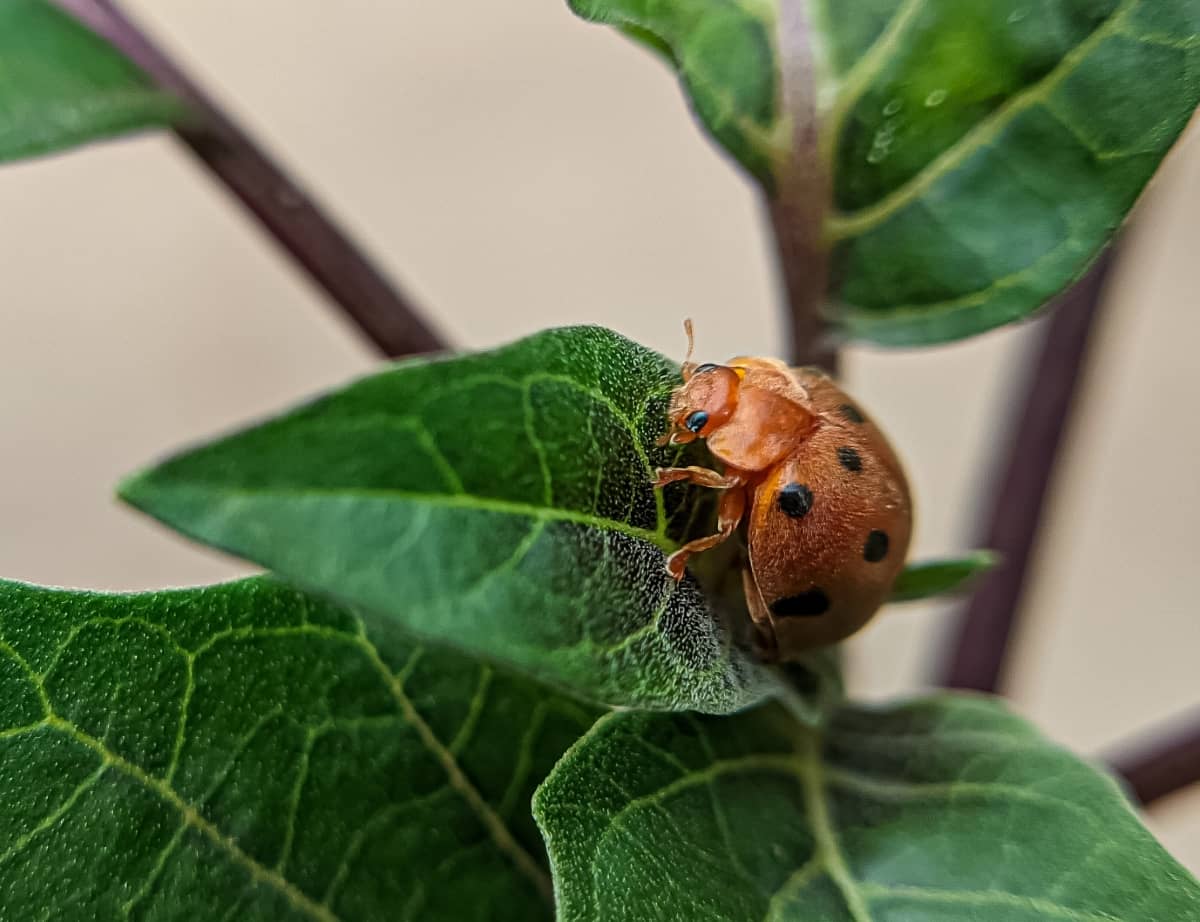Bean beetles, also known as Callosobruchus maculatus, are small insect pests that can have a significant impact on bean plants. These pesky insects can wreak havoc on bean crops, causing significant damage to both commercial plantations and home gardens. Homemade sprays harness the power of natural ingredients to effectively control bean beetle infestations without harming the environment.
Top 10 Homemade Sprays for Bean Beetles
Tobacco Spray
Tobacco Spray is a popular homemade remedy for getting rid of bean beetles. It is made by soaking tobacco leaves or cigarette butts in water and then straining the liquid before applying it to your plants. The nicotine in the tobacco acts as a natural insecticide, repelling and killing the bean beetles. To make organic bean beetle spray, gather some tobacco leaves or collect used cigarette butts. Please place them in a bucket filled with water and let them soak for 24 hours.
After that, strain the liquid into a spray bottle, and you’re ready to go. When using Tobacco Spray, make sure to thoroughly coat all parts of your plants affected by bean beetles. It’s important to note that while Tobacco Spray can be effective against bean beetles, it should be used with caution as nicotine can also harm beneficial insects. So, use this spray sparingly and only when necessary.
Baking Soda Spray
To make the DIY pest control for beans, all you need is water and baking soda. Mix baking soda with water in a bottle. Combine well to ensure the ingredients are blended properly. When applied to affected bean plants, the baking soda spray creates an alkaline environment that disrupts the bean beetles’ delicate pH balance, ultimately leading to their demise. It works by dehydrating them and inhibiting their ability to reproduce.

The best time to apply organic gardening beetle control spray is early morning or late afternoon when temperatures are cooler and less likely to cause damage to your plants. Make sure to coat both sides of the leaves where beetles may be hiding.
Chili and Garlic Spray
This natural insecticide not only helps to repel these pesky pests but also adds a punch of flavor to your gardening routine. To make bean plant beetle treatment spray, blend fresh chili peppers and garlic cloves with water. Let the chilli and garlic mixture steep overnight, then strain it into a spray bottle.
When applied to bean plants, the spicy scent acts as a deterrent for bean beetles, keeping them at bay. The active compounds found in chili peppers, particularly capsaicin, are known for their pest-repellent properties. These compounds create an unpleasant sensation on the insects’ feet and mouthparts when they come into contact with the spray.
Diatomaceous Earth
DE is an organic substance used as an effective homemade spray for bean beetles. The benefit of using Diatomaceous Earth is that it is completely safe to use around humans and pets. To use a home remedy for bean beetles, mix it with water until you achieve a paste-like consistency.
Then, apply this mixture directly to your plants using a spraying bottle or brush. The tiny particles in DE will stick to the bodies of the beetles upon contact, causing them to dry out and die. It’s important to note that Diatomaceous Earth should only be used on dry plants, as moisture can reduce its effectiveness.
Beer and Molasses Trap
This organic treatment works by luring the pests away from your bean plants and trapping them. To make a garden beetle-repellent DIY trap, you’ll need a shallow container such as a plate or bowl. Fill it halfway with beer and add a tablespoon of molasses to attract the beetles. Place the traps near your infested bean plants, preferably in shady areas where the beetles are most active.
The scent of fermenting beer and sweet molasses will entice the bean beetles, causing them to drown in the liquid. You can set up multiple traps around your garden to increase its effectiveness. The Beer and Molasses Trap is an eco-friendly solution that helps control bean beetle populations without using harmful chemicals.
Neem Oil Spray
When applied to bean plants, neem oil works by suffocating adult beetles and interfering with their feeding habits. To make a natural bean beetle remedy spray at home, mix a few tablespoons of pure neem oil with water and a small amount of dish soap. Spray this mixture onto your bean plants, ensuring coverage on both sides of the leaves. The best time to apply neem oil spray is early morning or late evening when temperatures are cooler and beneficial insects are less active. Be sure to reapply after rainfall or heavy watering, as it may wash off.
In case you missed it: Top 10 Homemade Sprays for Cutworms: DIY Organic Treatment to Get Rid of Cutworms

Epsom Salt Spray
To make an eco-friendly bean beetle solution, all you need is water and Epsom salt. Dissolve Epsom salt in water, then transfer the mixture to a spray bottle. You can apply the mixture to your bean plants, making sure to cover the leaves. The magnesium sulfate in Epsom salt acts as a deterrent for these insects.
It makes it difficult for them to feed on your plants by interfering with their ability to digest food. Not only does Epsom Salt Spray help repel bean beetles, but it also provides additional benefits to your plants. The magnesium in the salt promotes healthy growth and enhances nutrient absorption in beans.
Cinnamon Spray
Cinnamon spray is a natural solution that can help you get rid of bean beetles in your garden. This homemade spray is easy to make and highly effective at repelling these pests. To make cinnamon spray, mix one tablespoon of ground cinnamon with two cups of water. Let the mixture steep overnight or for a few hours to allow the cinnamon to infuse into the water.
Once ready, strain the mixture into a spray bottle and generously spritz it onto your bean plants. The scent of cinnamon acts as a deterrent for bean beetles, making them less likely to infest your plants. Not only does this method provide an organic alternative to chemical pesticides, but it also adds a pleasant aroma to your garden.
Essential Oil Spray
To make your essential oil spray, mix your chosen essential oil with water in a bottle. Some recommended oils for repelling bean beetles include peppermint, lavender, and lemon eucalyptus. These oils not only smell great but also have insect-repelling properties. When using essential oil spray on your bean plants, make sure to target the undersides of the leaves where the beetles tend to lay their eggs. This will help prevent further infestation and protect your precious crop. The advantage of using essential oil spray is that it is completely safe for both humans and plants.
In case you missed it: Top 10 Homemade Sprays for Armyworms: DIY Remedies for Getting Rid of Them

Vinegar Spray
To make your vinegar spray, mix white vinegar and water equally in a spray bottle. Shake well before each use to ensure proper dilution. When applying the spray, make sure to coat the leaves thoroughly and stems of your bean plants where the beetles tend to feed. Additionally, vinegar is an eco-friendly alternative that won’t harm beneficial insects like bees or ladybugs.
While vinegar spray can effectively deter bean beetles, it’s important to note that it may also affect other insects in your garden. To minimize any potential harm, consider spraying early in the morning or late in the evening when most beneficial insects are less active. Remember to test a small area of your plants first before applying vinegar spray on a larger scale.
In case you missed it: Top 10 Homemade Sprays for Squash Bugs: Easy DIY Solutions for Getting Rid of Squash Bugs

Conclusion
Bean beetles may seem like pesky insects that wreak havoc on our bean plants. The presence of these pests can also affect plant health overall. Fortunately, there are several homemade sprays you can make using natural ingredients readily available at home or garden stores.
- Beneficial Insects in Pest Management
- Natural Solutions for Pest Control in Flower Gardens
- Types of Fungicides Used in Agriculture
- Common Issues in the Fruit Development Stage of Pomegranate Farming
- Fruit Development Issues in Papaya: Easy Solutions and Treatment
- Soil-Borne Diseases and How to Protect Your Plants
- Practices to Prevent Disease Spread in the Garden
- From Wilted to Thriving: How to Treat Root Rot Naturally in Houseplants
- Natural Remedies to Cure Brown Spots on Fig Tree Leaves